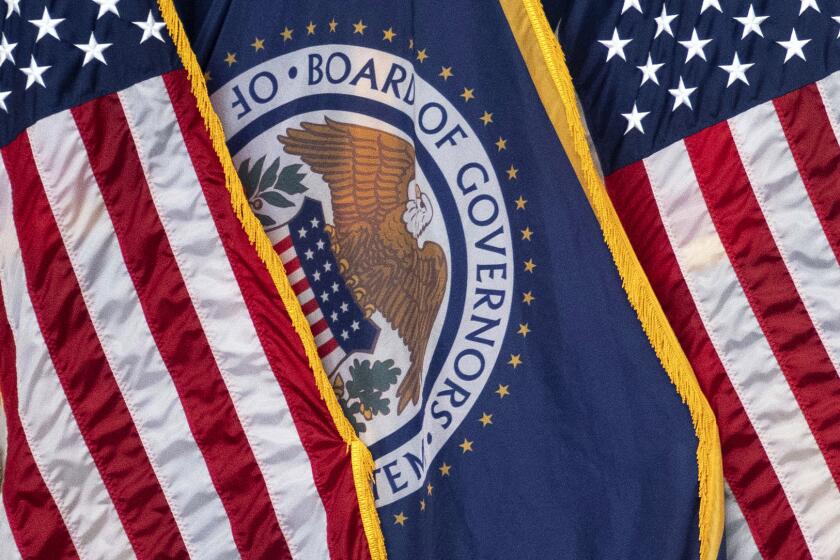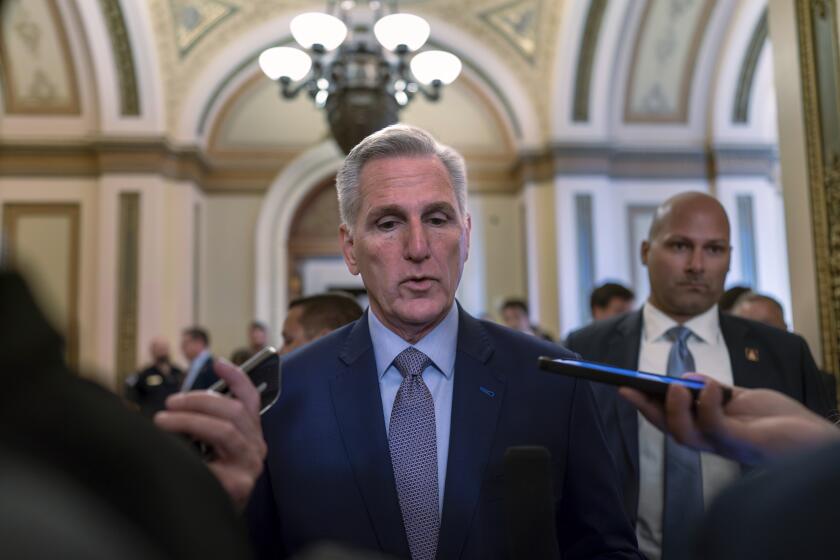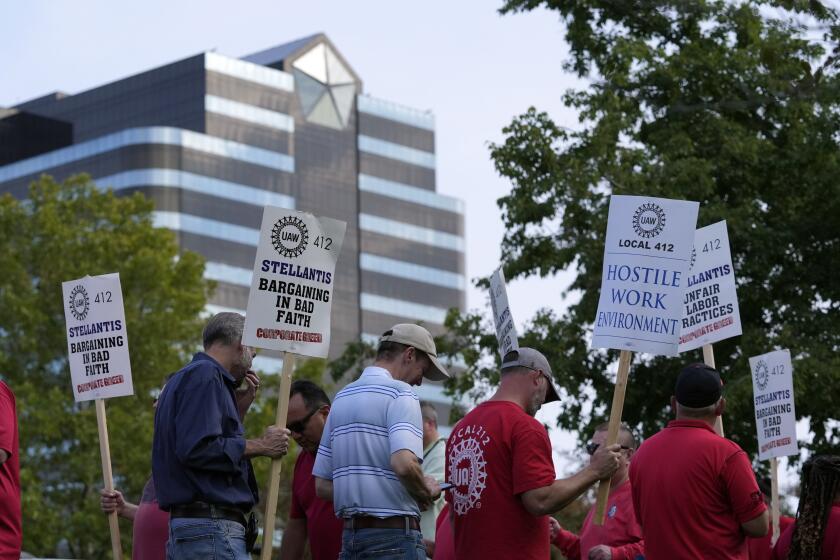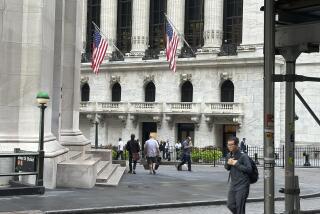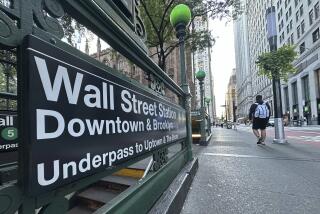Wall Street falls sharply as its September slump gets even worse
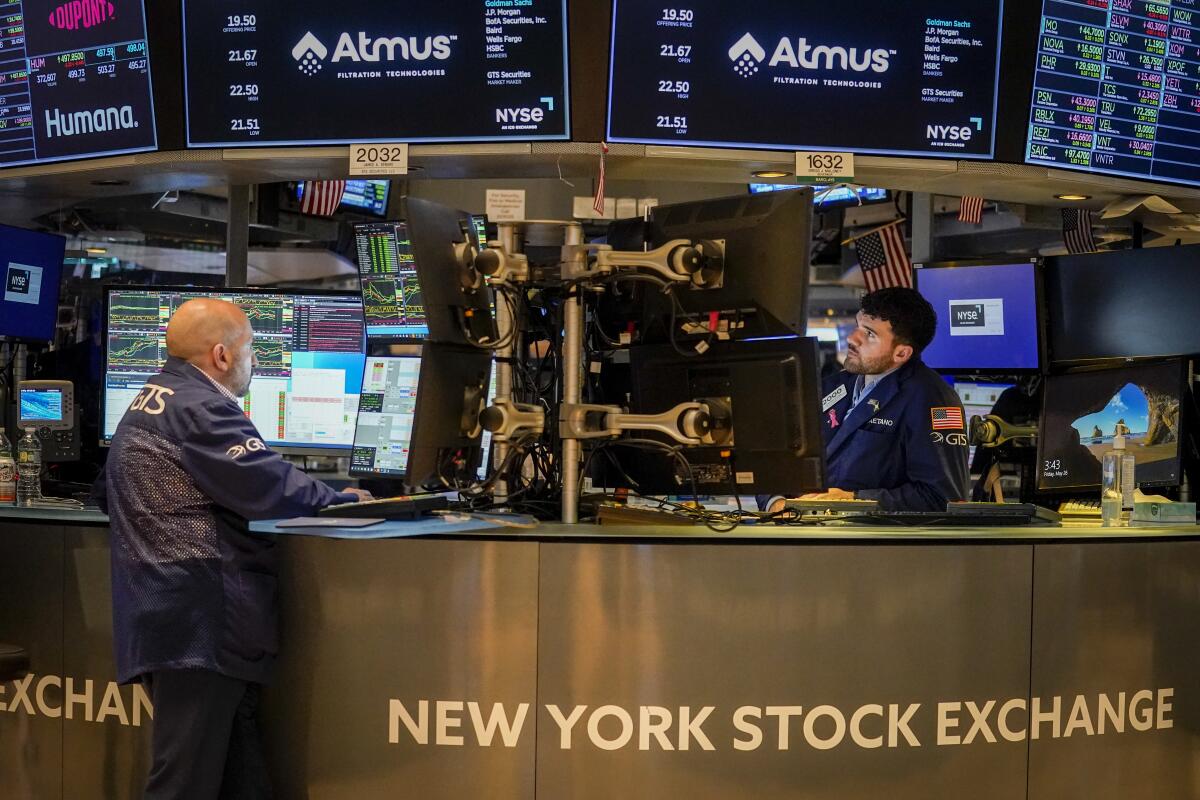
- Share via
Wall Street’s ugly September got even worse Tuesday, as a sharp drop for stocks brought them back to where they were in June.
The Standard & Poor’s 500 tumbled 1.5% for its fifth loss in the last six days. The Dow Jones industrial average dropped 388 points, or 1.1%, and the Nasdaq composite lost 1.6.
September has brought a loss of 5.2% so far for the S&P 500, putting it on track to be the worst month of the year by far, as the realization sets in that the Federal Reserve will indeed keep interest rates high for a long time. That growing understanding has sent yields in the bond market to their highest levels in more than a decade, which in turn has undercut prices for stocks and other investments.
Treasury yields rose again Thursday following a mixed batch of reports on the economy.
The yield on the 10-year Treasury edged up to 4.55% from 4.54% late Monday, and is near its highest level since 2007. It’s up sharply from about 3.50% in May and from 0.50% about three years ago.
The Federal Reserve left its key interest rate unchanged for the second time in its last three meetings, a sign that it’s moderating its fight against inflation.
The rise in yields means bonds “now seem reasonable after a long time, but stocks still do not,” according to strategists at Barclays led by Ajay Rajadhyaksha.
One economic report on Tuesday showed confidence among consumers was weaker than economists expected. That’s concerning because strong spending by U.S. households has been a bulwark keeping the economy out of a long-predicted recession.
A separate report said sales of new homes across the country slowed by more last month than economists expected, and a third report suggested manufacturing in Maryland, the Virginias and the Carolinas may be steadying itself following a more than yearlong slump.
Although housing and manufacturing have felt the sting of high interest rates, the economy overall has held up well enough to raise worries that upward pressure still exists on inflation. That pushed the Fed last week to say it will probably cut interest rates by less next year than earlier expected. The Fed’s main interest rate is already at its highest level since 2001 in its drive to get inflation back down to its target.
Besides high interest rates, a long list of worries is also tugging at Wall Street. The most immediate is the threat of another U.S. government shutdown as Capitol Hill threatens another stalemate that would shut off federal services across the country.
Wall Street has dealt with such shutdowns in the past, and stocks have historically been turbulent in the run-up to them, according to Lori Calvasina, strategist at RBC Capital Markets.
After looking at the seven shutdowns that lasted 10 days or more since the 1970s, she found the S&P 500 dropped an average of roughly 10% in the three months heading into them. Stocks managed to hold up rather well during the shutdowns, falling an average of just 0.2%, before rebounding meaningfully afterward.
Congress is moving into crisis mode as Senate unveils bipartisan bill to avoid a government shutdown
House Speaker Kevin McCarthy faces an insurgency from hard-right Republicans eager to slash spending even if it means curtailing federal services.
Besides the threats of higher interest rates for longer and a possible federal shutdown, Wall Street is also contending with higher oil prices, shaky economies around the world, a strike by U.S. autoworkers that could put more upward pressure on inflation and a resumption of U.S. student-loan repayments that could dent spending by households.
On Wall Street, the vast majority of stocks fell Tuesday under such pressures, including 90% of those within the S&P 500.
Big Tech stocks were the heaviest weights on the market. They tend to be among the hardest-hit by high rates, and they were the heaviest weights on the index. Apple fell 2.3% and Microsoft lost 1.7%.
Amazon tumbled 4% after the Federal Trade Commission and 17 state attorneys general filed an antitrust lawsuit against it. They accuse the e-commerce behemoth of using its dominant position to inflate prices on other platforms, overcharge sellers and stifle competition.
Cintas dropped 5.3% for one of the larger losses in the S&P 500. The provider of employee uniforms, mops, fire extinguishers and other items reported stronger profit for its latest quarter than analysts expected. It also raised its forecasts for revenue and profit for the full fiscal year, but still within a range that many analysts earlier expected.
Stocks fell in markets around the world, with indexes lower across Asia and much of Europe.
The United Auto Workers union expands its strikes against major automakers by walking out of dozens of locations in 20 states.
Japan’s Nikkei 225 fell 1.1%, South Korea’s Kospi dropped 1.3% and Hong Kong’s Hang Seng lost 1.5%.
In China, concerns continued over heavily indebted real estate developer Evergrande. The property market crisis there is dragging on China’s economic growth and raising worries about financial instability.
France’s CAC 40 fell 0.7% and Germany’s DAX lost 1%.
Crude oil prices rose, adding to worries about inflation. A barrel of benchmark U.S. crude climbed 71 cents to $90.39. Brent crude, the international standard, added 67 cents to $93.96 per barrel.
AP writers Yuri Kageyama and Matt Ott contributed to this report.
More to Read
Inside the business of entertainment
The Wide Shot brings you news, analysis and insights on everything from streaming wars to production — and what it all means for the future.
You may occasionally receive promotional content from the Los Angeles Times.
